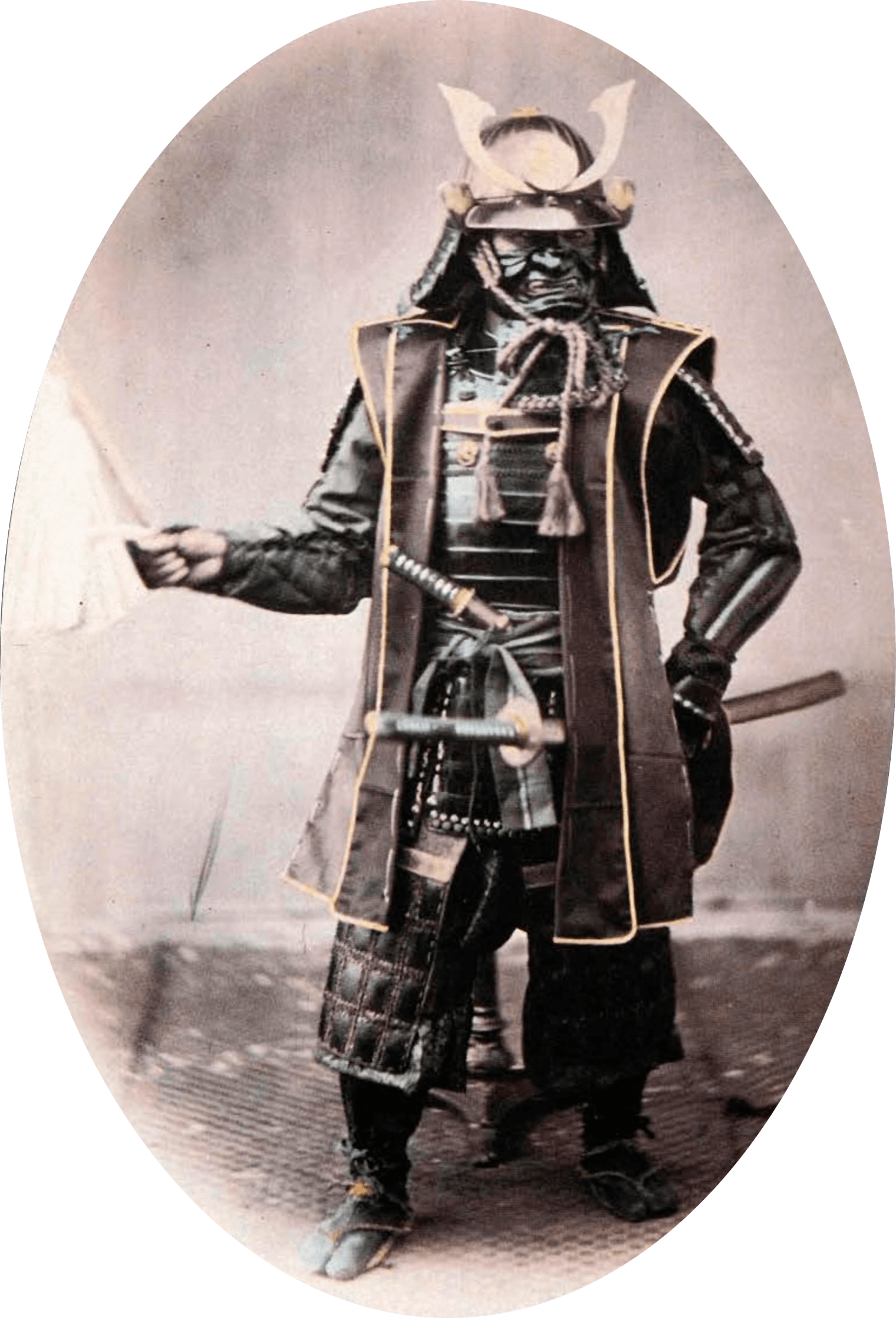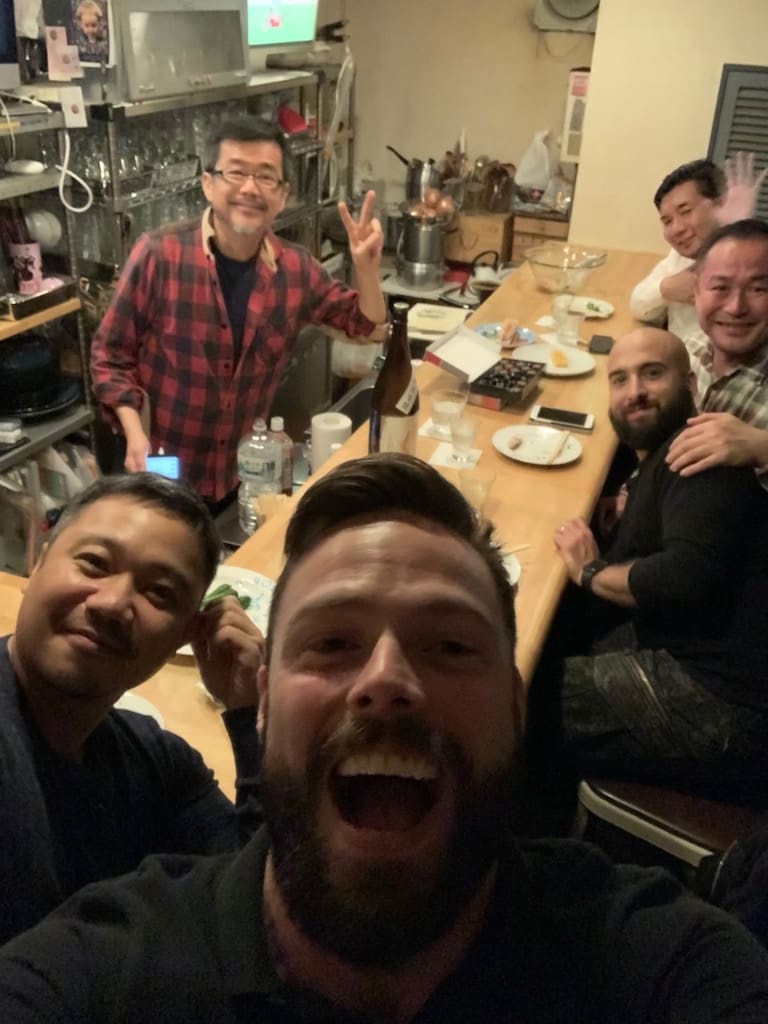In and out of battle, the Samurai loved a good sword fight.
by Lino DiNallo
While many Out Adventures holidays delve deep into jungles or up the tallest mountains, the Kyoto To Tokyo tour through Japan is our most urban adventure. Perfect for city slickers, it serves up ten days in megalopolis surroundings, with tastes of nature and small town living thrown in. The trip culminates in the world’s largest supercity; where the population rivals Canada (the second largest country on Earth) at 37 million.
While Japan leads countless trends and technologies, gay culture has further to go on this archipelago. It was only this year – 2021 – that a district court ruled it unconstitutional to ban same-sex marriage. This is welcome news, but the country could still be several years away from legalization.
While Japan plays catch-up with queer life today, it’s worth noting the Samurai, and in turn the general population, openly indulged in same-sex shenanigans. It was only our recent Western (read: Christian) influence that made the Japanese sour on homosexuality.
Read on for a taste of Japan’s queer history.
The Religious Paradox
Shintoism has been around since 1000BC. As old as Japan itself, the spiritual tradition believes all people are fundamentally good. And since sex, regardless of your partner, was an expression of love it was an inherently benign act. Mind you, it was still possible to “sexually pollute” oneself, but only in the context of spiritual enlightenment.
The Shinto tradition was soon followed by Buddhism (which definitely encouraged abstinence in the name of spiritual purity). Still, Buddhists acknowledged sexual desire was normal. There were no Christian guilt trips, confessions or penance. Moreover, if you got your freak on, Buddhists could appreciate the synergy of a same-sex dalliance. You scratch my back and I’ll scratch yours.
Then there was the matter of misogyny. Women were – in no uncertain terms – evil and treacherous. Evil! Treacherous! Gay sex was the more wholesome alternative. Obviously.
Sex wasn’t Sinful
Unlike today’s Christian sensibility, where the point of sex is procreation, ancient Japan got it on like free-loving hippies. Male or female, everybody was fair game in the quest to commingle conjugal cowbells. There was no shame in promiscuity. Getting around was the way to validate you were a succulent piece of sashimi that could still soak up the soy sauce. Moreover, just because you had sex with another man (or woman), there was no need to label it ‘gay’. Same-sex orgasms didn’t warrant coming out parties.
There was a Sex Cult
Buddhism and Shintoism do acknowledge sex is special. But Tachikawa-ryu, Japan’s take on Tantra, made it a religious experience. Their sexual rituals were said to control supernatural and cosmic forces. Opponents, however, said it was dark-sided black magic. One ritual involved grinding up human skulls, after all. Tachikawa-ryu was banned in the 13th century, and its writings destroyed or locked away…though some believe it still operates covertly.
There were Age Differences
Like ancient Greece, where older men took youthful male lovers, Japan’s Nanshouku tradition brought mentorship and sexual relations between elder monks and younger fellows coming of age. The arrangement was committed but not monogamous. A rite of passage for the younger men, it was presumed they would eventually marry women and have children.
With the birth (and swelling) of the Samurai class – Japan’s prestigious military nobility – an increasing number of young men found themselves face-to-face with older monks in monastic settings. Not to mention what happened when they were away at battle. It became a self-perpetuating cycle of sexual pursuit.

Photo credit Wikipedia Commons
There was even a Third Gender
The Nanshouku tradition evolved into ‘wakashudou’. Those sexual antics once reserved for noblemen and monks became popular with society at large. Relations between older men and ‘apprentices’ were not only common but also acceptable. The Wakashū (younger men) even wore distinct kimonos, with exclusive hairstyles featuring a shaved crown and long forelocks. The beauty of their male youth was compared to cherry blossoms, with an elusive allure distinct from women or mature men. Once Wakashū came of age, they transitioned to more masculine fashion and grooming.

Then it became Illegal
The Meiji Restoration began in 1868 and brought an end to Japan’s military government. The Samurai that wholeheartedly embraced same-sex attraction found themselves on the wrong side of history. Japan conscientiously leaned into Western ways and social norms. While the nation industrialized fast, it became quite puritan. Japan even made sodomy illegal from 1872-1882 in an effort to be hip.

The 1999 film Gohatto, or Taboo – directed by Nagisa Ōshima – takes place during this time. About an elite Samurai group, the tale focuses on handsome new arrival Kanō Sōzaburō, played by Ryuhei Matsuda. He was only sixteen when the film was made.
Modern Queer Japan
One area where Japan does excel is gender expression. It’s colourful and fluid. There’s an easy comfort with how people express their masculine and feminine spirit through hair, fashion and makeup.
Contemporary gay culture is also growing. People still live in the closet given the strong focus on family units. Homophobia is also prevalent in those same family units. Still, pride parades are becoming more prevalent, and international influence is having a positive impact.
Cheers to Tokyo’s Gay Bars
Today, Tokyo has one of the densest collection of gay bars per capita in the world. Unlike the mega-clubs of Ibiza, London or Miami, these bars aren’t just small. Some are minuscule, and seat only a handful of people (literally less than five). No matter your style or budget, when accompanied by a local it’s easy to find a bar that feels just right (and the hunt is half the fun).

If you want to learn more about our Kyoto To Tokyo tour, email [email protected] or call 1-866-360-1152. Big cities and micro-bars await!
Featured Posts
Stefan Arestis, co-founder of the gay travel blog Nomadic Boys, joins our hosts on today's super kawaii Tokyo episode. Read More
Japan may be a tiny island easily traversed by solo travellers. But cracking into the local culture and grasping a deep understanding of the notoriously shy Japanese people is, well, a challenge. Enter Joe, our handsome new Japan guide. Read More
Japanese customs are notoriously complex. To avoid ruffling feathers, we’ve put together a cheat sheet for travellers visiting The Land of the Rising Sun. Read More
